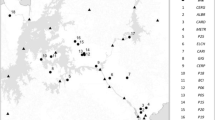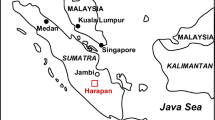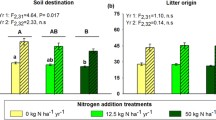Abstract
The feedback between plant litterfall and nutrient cycling processes plays a major role in the regulation of nutrient availability and net primary production in terrestrial ecosystems. While several studies have examined site-specific feedbacks between litter chemistry and nitrogen (N) availability, little is known about the interaction between climate, litter chemistry, and N availability across different ecosystems. We assembled data from several studies spanning a wide range of vegetation, soils, and climatic regimes to examine the relationship between aboveground litter chemistry and annual net N mineralization. Net N mineralization declined strongly and non-linearly as the litter lignin:N ratio increased in forest ecosystems (r 2 = 0.74, P < 0.01). Net N mineralization decreased linearly as litter lignin concentration increased, but the relationship was significant (r 2 = 0.63, P < 0.01) only for tree species. Litterfall quantity, N concentration, and N content correlated poorly with net N mineralization across this range of sites (r 2 < 0.03, P = 0.17–0.26). The relationship between the litter lignin:N ratio and net N mineralization from forest floor and mineral soil was similar. The litter lignin:N ratio explained more of the variation in net N mineralization than climatic factors over a wide range of forest age classes, suggesting that litter quality (lignin:N ratio) may exert more than a proximal control over net N mineralization by influencing soil organic matter quality throughout the soil profile independent of climate.
Similar content being viewed by others
Explore related subjects
Discover the latest articles, news and stories from top researchers in related subjects.Author information
Authors and Affiliations
Additional information
Received: 16 December 1996 / Accepted: 8 February 1997
Rights and permissions
About this article
Cite this article
Scott, N., Binkley, D. Foliage litter quality and annual net N mineralization: comparison across North American forest sites. Oecologia 111, 151–159 (1997). https://doi.org/10.1007/s004420050219
Issue Date:
DOI: https://doi.org/10.1007/s004420050219




